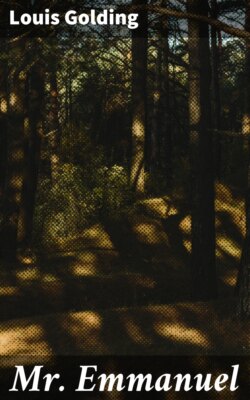Читать книгу Mr. Emmanuel - Louis Golding - Страница 6
На сайте Литреса книга снята с продажи.
III
ОглавлениеTable of Contents
Magnolia Street is a small street in the Longton district of Doomington, in the North of England. It is one of several streets called after the names of flowering shrubs that run parallel to each other right and left across the central thoroughfare of Blenheim Road. It is mainly Jews who live in the streets south of Magnolia Street, though some Gentiles live there. The converse holds of the streets north of it. Magnolia Street itself is different from these others because Jews and Gentiles live there in equal numbers, the Jews in the odd-numbered houses on the south side, the Gentiles in the even-numbered houses on the north.
That has been the situation for several decades, and there was a time when it would have been as unthinkable for a Jewish family to live on the Gentile pavement as for a Gentile family to live on the Jewish pavement. The two sides of the street virtually did not exist for each other, except when certain major public occasions, like the Great War, or certain dramatic private occasions, like a wedding or a death, reminded the folk they were made of pretty much the same stuff, spirit and mind and flesh. There had even been one or two marriages between people from the opposite sides of the street, but on the whole these had not much affected the general situation, though they had caused a good deal of chatter at the time they happened.
Now, in 1935, there were one or two Jewish families on the Gentile pavement, and vice versa, though on the whole the street remained as it had been, out of a sort of inertia. The taboo that had once existed did not prevail. Certainly the landlord of the property, who had once been very stringent about the admission of Jews to the Gentile side, had forgone all his scruples. You could not pick and choose your tenants these days, with the Building Societies competing to provide the humblest workman with his own house on easy terms, houses with gardens on the fresh edges of the city, electric light, indoor sanitation, hot and cold water.
It is in the front room of number thirteen, on the Jewish pavement of Magnolia Street, that Mr. Isaac Emmanuel is now sleeping, the time being one a.m. He is on his own side of the street. Who is this young man who, as the clock strikes, turns the corner of Aubrey Street into Magnolia Street, walks on for a minute or so, then stops at the door of Mr. Emmanuel’s house? Is he on his own side of the street? To judge from his appearance, as the light falls on him from the lamp-post a few yards away, he is not. He has a tousle of fair hair, his eyes are blue or grey, he has a short snub nose and a deeply cleft chin. He looks like some manual worker, a mechanic or a driver, perhaps, who does a bit of boxing now and again.
Something has attracted his attention, a chalk-mark on Mr. Emmanuel’s door. He goes closer. Yes, he confirms it. It is a swastika. “The bastards!” the young man mutters under his breath. He takes out his handkerchief, spits on it, and rubs the chalk-mark out. Then he walks on a few yards, crosses the roadway, and lets himself into one of the houses on the Gentile pavement. He disappears from this tale. The annals of Magnolia Street have no record of his name.
